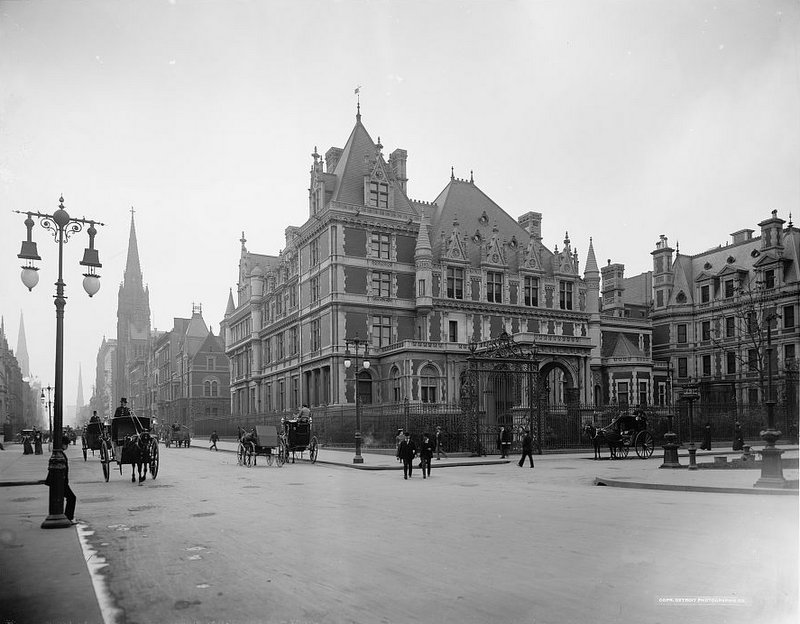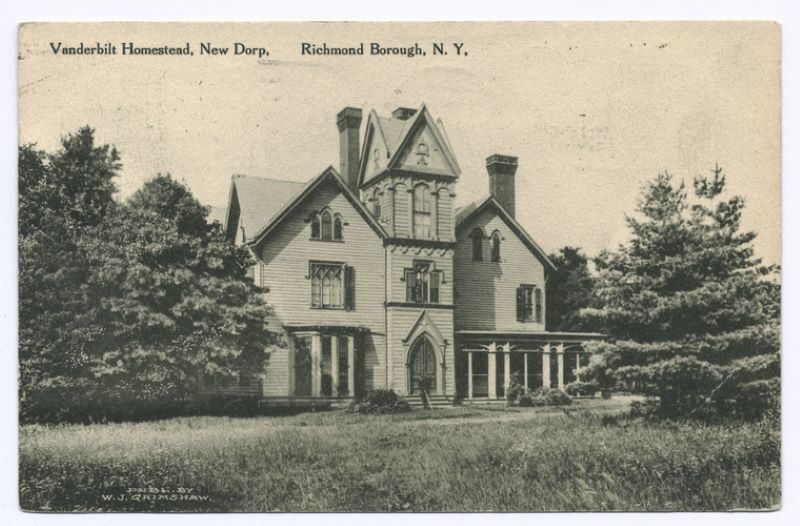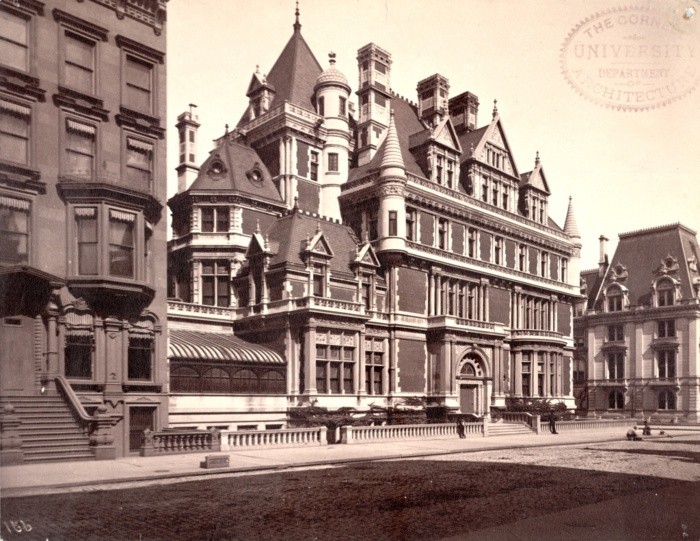
The Vanderbilt family, the namesakes of New York sites such as Vanderbilt Avenue and skyscrapers like One Vanderbilt, was one of the richest families in American history. Their success began with the shipping and railroad endeavors of “Commodore” Cornelius Vanderbilt, and his descendants would go on to not only expand the family’s business and fortune but also build grand mansions throughout the city and surrounding area. There were dozens of mansions constructed on Fifth Avenue and nearby streets by his children and grandchildren, many of which were demolished. They also built luxurious summer cottages in Newport, Rhode Island, including The Breakers. However, in what was described as the “Fall of the House of Vanderbilt,” the Fifth Avenue mansions and estates in the New York area were either destroyed or converted into museums. Although much of the history of these historic structures now hides behind office buildings or department stores, learn more about the two dozen Vanderbilt homes in New York that once pulled in the most affluent and famous of guests.
You can learn more about the Vanderbilt houses and other Gilded Age mansions in our Fifth Ave Gilded Age Mansions Tour!
1. Vanderbilt Homestead, New Dorp on Staten Island

One of the first New York Vanderbilt estates was located in New Dorp, Staten Island, built for William Henry Vanderbilt and his wife Maria Kissam circa 1850. His father, Cornelius, grew up on a small farm in New Dorp that had been in the Van Derbilt since 1718. Cornelius, though, despised William and considered him unsuccessful and not fit for the family’s business, so he gave William management of the farm. William the “Blockhead,” as his father called him, built a 24-room farmhouse in New Dorp with his wife Maria, perhaps to be farther away from his abusive father.
William and Maria called the estate “the white house,” mainly just because it was painted white. Their children all grew up on the property, and they would go on to build many of the Gilded Age mansions across the country. William would soon become the richest man in America, especially after turning the family farm into a profitable business. William also revived the bankrupt Staten Island Railroad, which allowed him to reconnect with his father and gain his pride. The Vanderbilts lived here permanently until 1864 when William joined his father’s railroad business. They maintained the house as a country home, and after William’s 1885 death, the property was given to his youngest son, George William Vanderbilt.






